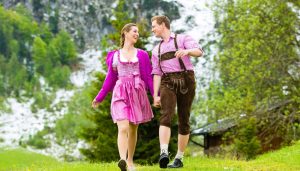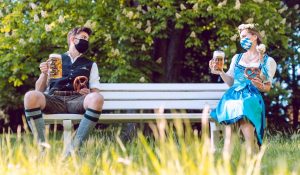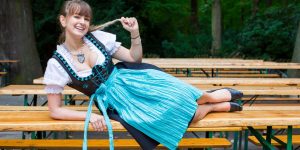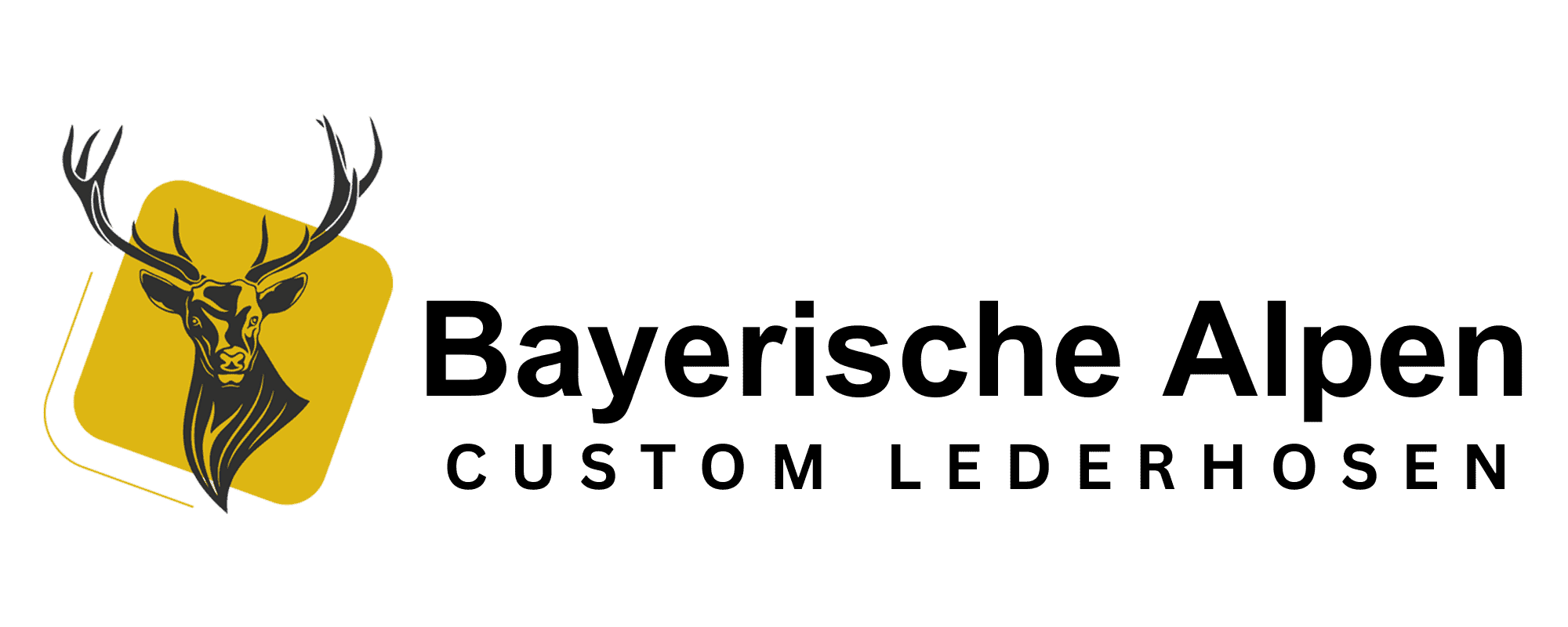No products in the cart.
Return To ShopWhen is Oktoberfest in Germany in 2025? – 190th Oktoberfest
Munich is all set to host its 190th Oktoberfest from 20 September to 5 October 2025. Buy your favorite Lederhosen and get ready to be
Oktoberfest is the heart and soul of the rich Bavarian culture. It is a legacy carried forward from the 1800s, existing today as the largest folk festival in the world. Once regarded as only a German festival has now turned into a worldwide phenomenon. The celebration begins from the second week of September and lasts till October’s first week.
One could say that as the soft, autumn hymns replace the wild chords of summer, the Germans revoke with passion, zeal, and zest for a month they resonate with their identity.
The practice takes its roots from the grand festivities held after the marriage of Crown Prince Ludwig and Princess Theresa in 1810. A big thanks to Michael Dall’Armi, the member of the Bavarian National Guard who brought forward the idea of a unique wedding in the manner of a festival and a horse race, and so the day marked the beginning of a great folk festival by the name of Oktoberfest. The entirety of Munich locals participated in the celebration, held on the lush, open fields on the front gate called “Wies’n.” Today, the same name follows for the festival in German, with the Bavarian spirit ten-folds more robust.
The Oktoberfest is a garland for the Bavarian spirit. Over the course of two weeks, locals and tourists alike, dressed up in Munich Oktoberfest Lederhosen and Dirndl, engage in wild drinking, dancing, and a range of entertainment options. Fueled by an unbridled passion for German culture, the event commemorates its ancestors, celebrates their identity, and recognizes the long journey the Bavarians have withstood.

On a random street in Munich during the fest days, you will spot people dancing the hours away, Ein Prosit’s strong melody echoing in the background, and countless many chants of “Prost” as hefty amounts of beer are consumed.
Beer is vital to fuel the buoyancy of Oktoberfest celebrations, a tradition deep-rooted in Bavarian history. On its 8th anniversary in 1818, food and drink stalls were permanently added to the festival. However, the landscape of these tents changed in the early 20th century when 36 beer halls took over, occupied by Munich’s top breweries.
These breweries, catering to the rising demand for alcoholic refreshments, are those abiding by
Germany’s beer purity law. Evidently, much attention to detail is reserved for the beverage, upheld as a significant icon for German culture.
Today, it is indistinguishable whether there are more attendees than the hectoliters of beer consumed in the festivities.
With the air dancing along with the melodies of the Bavarian spirit and each attendee’s spirit soaring to newfound heights, you want to be perfectly dressed for the occasion.

What to wear to Oktoberfest?
The only appropriate ensemble for women and men are dirndl and lederhosen. Of course, from a tourist’s point of view, the outfits may not represent anything more than German cosplay or Halloween costumes. But, a true Bavarian would know the profound meaning the authentic Oktoberfest outfit holds and the prestige it deserves.
In fulfillment of the unwavering, fierce nature of the fest, most individuals dress up in a Lederhosen. These are knee-length leather pants in brown, earthly shades balanced on the body with a suspender. The design varies from shop to shop, but each features elaborate embroidery patterns and buckle detailing.
It began as a garment for men but has evolved into a unisex outfit, appropriate for most other traditional occasions. A typical Oktoberfest lederhosen outfit consists of a long-sleeve checkered shirt, the Trachten, strumpfhosen socks, and a pair of matching leather haferl shoes.
The woman’s staple outfit is the female lederhosen costume – a dress complying with all urban fashion requirements. This German dirndl is symbolic of a long, historic struggle for identity, celebrating the many Germans’ conventions and welcoming the newcomers.

A traditional dirndl consists of a tight-fitting bodice under a short-sleeved blouse often exchanged for the more contemporary Trachten shirt, and an apron. You may find the dress in one piece or shop for separate bodices and blouses. With a perfectly assembled dirndl, you are in safe hands for making an Oktoberfest statement.
Yet, nothing would attract more spotlight on the occasion than an incorrectly placed apron bow. Interestingly, this tiny piece of fabric is a declaration of your marital status. If you are single, tie it to the left. Otherwise, it sits on the right side. The front is for the virgins, while a bow on the rear indicates you are widowed.
At first glance, the many intricacies of nailing the lederhosen Oktoberfest may seem daunting, but adhering to the traditions and following these urban legends is the only right way to confirm the Bavarian spirit.
Celebrations occurring outside of Munich usually follow suit and reflect these core traditions. In any case, a consciousness of your Bavarian roots will always allow you to uphold and preserve the values often forgotten in the hustle of this fast-paced world.
